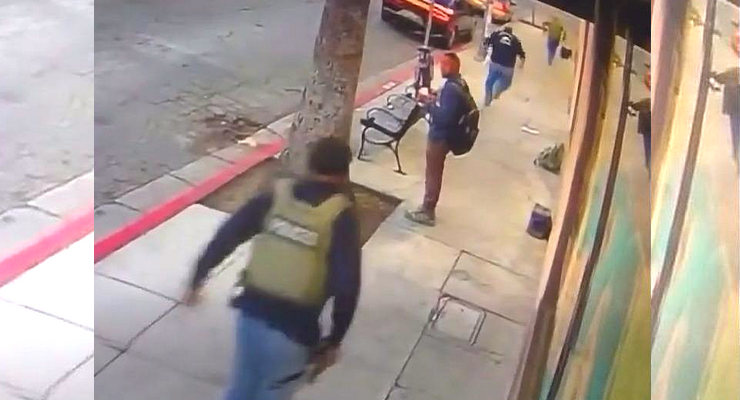
Following public review and committee discussions, the Pasadena City Council is set to adopt the city’s Fiscal Year 2026–2030 Capital Improvement Program (CIP) budget on Monday.
The $446 million funding plan is part of a broader $2.4 billion five-year strategic roadmap intended to tackle Pasadena’s growing infrastructure needs while navigating funding limitations.
The CIP includes 218 active projects across city departments and affiliated agencies, with 14 new initiatives added to this year’s plan. While the budget appropriates $446,087,631 in new funding this fiscal year, nearly $880 million has already been allocated to past projects. An estimated $1.1 billion in remaining funding is still needed to fully complete the existing portfolio, and an additional 48 “future projects” totaling $430 million have been identified but lack funding sources.
City officials emphasized that the CIP is not a crisis document but a forward-looking plan designed to guide funding priorities and support grant-seeking efforts. “The CIP budget is a five-year strategic planning document outlining long-term investment needs for the city’s infrastructure,” Public Works Director Greg de Vinck said during a joint City Council and Finance Committee workshop. “It serves as a roadmap for identifying, prioritizing, and funding capital projects, all consistent with the city’s general plan.”
Finance Director Matthew Hawkesworth said last week that including underfunded or unfunded projects in the CIP is intentional, as many federal and state agencies require active inclusion in a city’s plan before approving outside funding. “The CIP is a fluid document that can and does change throughout the year as new funds become available or priorities shift,” Hawkesworth said.
One of the most pressing concerns during the budget process was the condition of Pasadena’s streets.
The city’s Pavement Condition Index (PCI) currently stands at 59–60—up from 53 just a few years ago, but still below target. The proposed street resurfacing budget includes $5.9 million from gas tax, Road Maintenance and Rehabilitation Account, and sewer funds, with the potential for an additional $5 million in General Fund contributions, a move consistent with allocations in recent years. Transportation commissioners urged the Council to increase resurfacing investments to between $11 and $15 million annually, noting that such levels could bring the PCI closer to 64 over five years.
“If I had $75 million today, we would be saving millions of dollars,” de Vinck said, pointing out that deferred maintenance only increases long-term costs.
Councilmember Jason Lyon echoed those concerns, advocating for using city reserves to fund critical infrastructure. “It’s the people’s money, and it’s there for critical needs,” Lyon said.
But Mayor Victor Gordo urged caution, warning that reserves are also vital for navigating recessions, natural disasters, and unforeseen emergencies.
The recommended CIP budget also includes major funding for Pasadena Water and Power, which will receive $230 million this cycle—accounting for roughly 73% of new appropriations when excluding the Central Library project. Pasadena Water and Power priorities include system resilience and undergrounding high-voltage lines in high fire-risk areas following the January Eaton Fire. Interim General Manager David Reyes confirmed that all Tier 3 fire zones will see utility lines undergrounded in the coming years.
Other highlights in the plan include transportation initiatives totaling $278 million, 91% of which are backed by external grants. These projects focus on traffic calming, transit upgrades, and shifting to zero-emission fleet vehicles. The budget also sets aside $13.5 million for energy storage projects in FY 2026, reinforcing the city’s climate goals and commitment to a carbon-free electricity grid.
The Rose Bowl Operating Company is allocated funding to begin addressing long-term facility needs estimated at $200 million over the next 20 years. Critical maintenance needs at the stadium range between $3 to $6 million annually through 2030.
Community voices were also present in the process. Cynthia Cannady, writing on behalf of several residents, urged Council to prioritize local solar initiatives and climate resilience. “Climate change presents an existential threat to our community,” she wrote. “Electrifying homes and expanding access to solar energy are critical components of this effort.”
The Recreation and Parks Commission, Northwest Commission, Transportation Advisory Commission, and Planning Commission all reviewed the draft budget over the past two months, with each body offering unanimous support for the projects within their purview. A late administrative correction will also reinstate the Vina Vieja Pickleball Courts project, which had been mistakenly omitted from the published budget after the completion of its first phase.
The City Council is expected to adopt the final CIP budget by resolution at Monday’s meeting, formally closing the public hearing that began on April 14. The complete CIP document is available online and at the City Clerk’s Office.













 0 comments
0 comments


